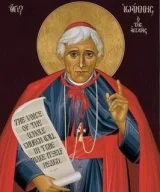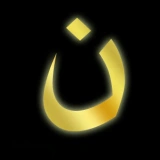Mgr Edwin Barnes writes:
Westminster Cathedral Hall, and the ordinariate priests of England and Wales (and Scotland) met in conclave with Mgr Keith Newton, our Ordinary, together with two extra Ordinaries, from North America and Australasia. These plenary sessions are great occasions for catching up with friends, discovering how their Groups or Missions are flourishing, what new ideas are coming up. From Plymouth we heard about the developments in catechetical opportunities given us by Buckfast Abbey – opportunities which the Abbot and his Community hope we will use with enthusiasm.
We also had visitors: the Chaplain to Cambridge University, Mgr Mark Langham, has long experience in ecumenical matters, so it was good to hear him speak about the Ordinariate as a great new venture in the search for Christian Unity. He is well versed in classical Anglican spirituality, and is pleased to have readings from Thomas Traherne or John Keble to lighten the load of St Augustine’s interminable sermon on the Shepherds.
 After a picnic lunch we turned our attention overseas. We complain about the cost of getting to London, and the time it takes; but it is trivial compared with Msgr Harry Entwistle’s travels. He lives in Perth, on the West Coast of Australia; to get his clergy together (and they are numbered only in tens rather than hundreds) it costs around £6,000. It was not so much the differences between the three Ordinariates so much as the similarities which were striking. We are all having to help Catholics of long standing understand what we are about. Of course if they had simply read what the Pope said in Anglicanorum Coetibus it would be perfectly clear…….
After a picnic lunch we turned our attention overseas. We complain about the cost of getting to London, and the time it takes; but it is trivial compared with Msgr Harry Entwistle’s travels. He lives in Perth, on the West Coast of Australia; to get his clergy together (and they are numbered only in tens rather than hundreds) it costs around £6,000. It was not so much the differences between the three Ordinariates so much as the similarities which were striking. We are all having to help Catholics of long standing understand what we are about. Of course if they had simply read what the Pope said in Anglicanorum Coetibus it would be perfectly clear…….
As always it was less the set pieces than comparing notes with other priests which was really helpful today. I shall post pictures of some of them on Facebook, but here are a couple for this blog (1. Fathers Smith and Redvers Harris and 2. Father Bould between the Pembury duo)
And because Fr Allan Hawkins would expect no less, I did raise with the three Ordinaries the question of married clergy. Are our wives a gift to the Catholic Church, or an impediment to be borne? I believe they are a gift to the whole Church, not to be hidden away or spoken about as an embarrassment. Perhaps, though, we do well to let them speak for themselves, and, as they become better known in Catholic Parishes, their lives of dedication and service will become increasingly appreciated.
Dylan Parry of the Friends of the Ordinariate, currently the Acting Communications Director of the UK Ordinariate, writes:
Mgr Mark Langham: Ordinariate is ‘a model of realised unity’
Addressing a plenary meeting of Ordinariate clergy in Westminster Cathedral Hall on Thursday 12 February, Mgr Mark Langham, who was until recently the Secretary to the Anglican and Methodist Dialogues at the Pontifical Council for Promoting Christian Unity and who is currently the Catholic Chaplain to Cambridge University, said that the Ordinariate is “a model of realised unity.” He also urged the personal ordinariates for former Anglicans to continue in their exemplary witness to “prophetic” and “truthful” ecumenism.
 Describing the current rifts within Anglicanism, in which some Anglican bishops “refuse to accept the authority of [other] Anglican bishops… and declare themselves out of communion with them”, Mgr Langham said that both “consistency” and “communion” are “essential qualities of ecumenism.” They are concepts that “…the Ordinariate can help reinvigorate, reapply and retune,” he added.
Describing the current rifts within Anglicanism, in which some Anglican bishops “refuse to accept the authority of [other] Anglican bishops… and declare themselves out of communion with them”, Mgr Langham said that both “consistency” and “communion” are “essential qualities of ecumenism.” They are concepts that “…the Ordinariate can help reinvigorate, reapply and retune,” he added.
Thinking things through
Reflecting on the recent consecration of the first woman bishop in the Church of England, and the “more significant event” of the consecration of the Bishop of Burnley, Mgr Langham highlighted that “one of them, significantly, does not recognise… the ministry of the other.” He then recounted his attendance at the 2008 Lambeth Conference, when the situation of Bishops refusing to celebrate the Eucharist with other Bishops was admitted to indicate a lack of ‘thinking through’ the consequences for communion. “Thinking through what communion means”, Mgr Langham said, “is the crux of the situation.” He added, “I would suggest that the Ordinariate is what happens when you think things through.”
Describing the Ordinariate, Mgr Langham said that it is “…a truthful response to the claim to be Catholic, a realistic expression of the unity of the Church. It is contributing to a more honest ecumenical project, by demonstrating the need, to our partners, to draw a rigorous theological conclusion from the claims of communion.”
By not shying away from the difficulties that the “journey” of ecumenism involves, and by bringing into the Church a distinctive identity and heritage, Mgr Langham said that the Ordinariate is an example of “realised ecumenism”, a “prophetic sign” and a “commitment to faithfulness.”
A model of diversity in unity
He also said that the Ordinariate “…has much to offer the wider Church. It holds out a successful, viable, model of diversity in unity – a visible sign that proclaims that shared communion does not mean uniformity of worship, traditions or government…. [It] needs to be broadcast wider in ecumenical circles, [as] an assurance to other ecumenical partners that the price of unity is not too high.”
Later in his address, Mgr Langham also said that the Ordinariate “…is a catechising tool, and example of methodology” and that “it has resources … which the wider Church needs.” The Ordinariate, he added, “…can show how to go about exploring and representing one’s own tradition. Here, I think, [the Ordinariate] can make a most significant contribution to modern ecumenical dialogue, both directly and indirectly. You not only model realised unity, but you model how to get there.”
 Also present at the plenary meeting were Mgr Keith Newton, Ordinary of the Personal Ordinariate of Our Lady of Walsingham, and the ordinaries of the US and Australian ordinariates, Msgr Jeffrey Steenson and Msgr Harry Entwistle. Both visiting ordinaries addressed the meeting during the afternoon, giving detailed and reflective accounts of their respective structures, the Personal Ordinariate of the Chair of St Peter (US and Canada) and the Personal Ordinariate of Our Lady of the Southern Cross (Australia).
Also present at the plenary meeting were Mgr Keith Newton, Ordinary of the Personal Ordinariate of Our Lady of Walsingham, and the ordinaries of the US and Australian ordinariates, Msgr Jeffrey Steenson and Msgr Harry Entwistle. Both visiting ordinaries addressed the meeting during the afternoon, giving detailed and reflective accounts of their respective structures, the Personal Ordinariate of the Chair of St Peter (US and Canada) and the Personal Ordinariate of Our Lady of the Southern Cross (Australia).
Mass in Westminster Cathedral
 After the working sessions, the three ordinaries were joined by H.E. Archbishop Antonio Mennini, Apostolic Nuncio to Great Britain, for the 5.30pm Solemn Mass at Westminster Cathedral.
After the working sessions, the three ordinaries were joined by H.E. Archbishop Antonio Mennini, Apostolic Nuncio to Great Britain, for the 5.30pm Solemn Mass at Westminster Cathedral.
 The principal celebrant at the Mass was Mgr Keith Newton and the preacher was Msgr Jeffrey Steenson.
The principal celebrant at the Mass was Mgr Keith Newton and the preacher was Msgr Jeffrey Steenson.

 After the events at Westminster Cathedral, Mgr Keith and Mrs Gill Newton held a private dinner at their home for Msgr Steenson and Msgr Entwistle, as well as Archbishop Augustine Di Noia and Msgr Steven Lopes of the Congregation for the Doctrine of the Faith.
After the events at Westminster Cathedral, Mgr Keith and Mrs Gill Newton held a private dinner at their home for Msgr Steenson and Msgr Entwistle, as well as Archbishop Augustine Di Noia and Msgr Steven Lopes of the Congregation for the Doctrine of the Faith.















